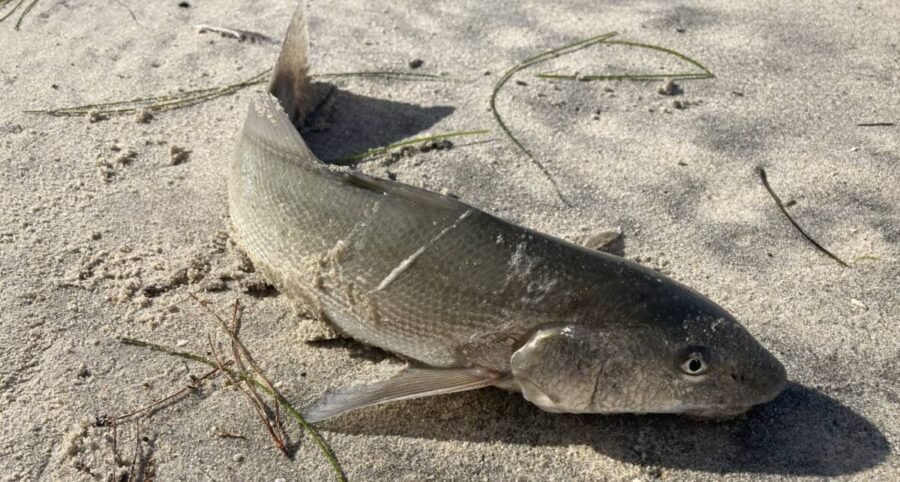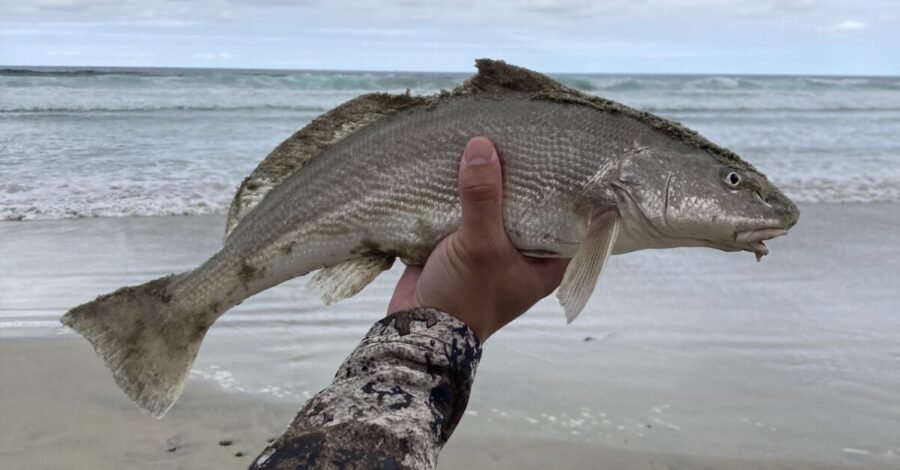What is Fish Slime and Why Is It Important?
Yes, fish are slimy. If you’ve ever handled a fish, it shouldn’t be news to you that fish do indeed have a coat of slime covering their bodies at all times. But why are fish slimy and what is fish slime? Today, we’ll talk about all that and provide some insight as to why it’s important in fish handling that you do everything possible to mitigate the disturbance and removal of that slimy coating protecting the fish.

What is Fish Slime?
Fish slime is a glycol-protein-based substance that is produced and secreted through a fish’s epidermis.
Why is Fish Slime Important?
It has a handful of major functions including the following.
- Protects fish from bacteria and parasites
- Reduces drag
- Acts as a healing remedy to wounds
- Balances electrolytes
- Aids in internal-external gas exchange
- Fends off predators via toxins, texture, etc.
- Often used to house offspring
- Can be used as food source for offspring
Can Fish Slime Be Reproduced?
Yes, fish slime is regularly produced and replaced. The easiest way to understand it is to compare it to human skin. While fish slime may be even more adapted and powerful than human skin, the two share some similarities. If a small portion of slime is removed from a fish, it will likely be healed and replaced fairly soon. But, harmful and even deadly infection is still possible.
If a large portion of slime is removed or disrupted, the affects become more detrimental and infection along with other damage to deeper skin is more likely to occur.
Is Fish Slime Toxic?
As mentioned in the bullet points above, some but not all fish slime is toxic. Fish can use this to fend off predators. One research article stated that some slime is so toxic that it can bring the jaws of a predator to a halt mid-bite.
How To Handle Fish and Not Remove Fish Slime
If you just read all those bullet points above, you likely know more now than you did yesterday about why fish slime is important, which is great! I won’t cover each function in detail in this article, but I will touch on what we can do to mitigate the removal of fish slime when we handle our catches.
If you plan to keep your catch, that’s perfectly fine if it’s legal to. But, I can guarantee that you’ll one day catch a fish you cannot legally keep. When that day comes, you should plan to release that fish in the healthiest state possible, providing it an opportunity to live a long life, reproduce, and eventually grow to a legal size. That right there, is the importance of catch and release.

Before I lecture everyone on how to properly handle a fish in a way to mitigate fish slime removal and overall damage to the health of your catch, I will be the first to admit… I’ve made all of the following mistakes. Who ever knew it was so important to preserve fish slime?
Fishing, like anything else, is a learn as you go sport, and nobody knows everything on day one. The best thing we as anglers can do is be receptive to constructive criticism and educate those around us in a friendly, supportive manner.
1. Minimize Handling Time
This goes for fish handling in general. It’s always a good idea to get your catch back into the water as quickly as possible. But, in terms of fish slime, the longer the fish is out of the water, the chance of improper handling increases.
2. Grip Gently
Below is a really interesting video that will lead us to our next tip. When you grip a fish tightly, all sorts of things can go wrong. You can damage internal organs, damage the actual skin, and/or the fish can slip out of your hands and fall to the ground resulting in a slew of other potential problems.
3. Avoid Using Gloves
As I mentioned earlier, I’ve been guilty of all of these. I used gloves for a couple years when my hands would begin to peel every time I fished. Now, that’s not a big issue for me so, I don’t use gloves. If you plan to release your catch, it’s generally recommended to not touch your fish while wearing gloves. Bare, wet hands are the standard.
While I don’t necessarily believe the damage caused to the fish in this video was strictly due to the fact the man was wearing gloves (I think he squeezed the tail very hard and abraded the skin, slime, and scales of the fish), it’s worth noting that it certainly affects fish slime in an adverse manner.
4. Don’t Drop Your Fish
This one is easier said than done. Sometimes, it happens. Fly fishermen have taken major steps to avoid this problem altogether by hardly (if ever) removing the fish from the water. Rather, they do their best to unhook and release their catches all while keeping the fish in or just above the water.
But, it’s important to understand that if/when you drop a fish, depending on the fish’s size and weight, and the terrain you’re fishing, a few things could happen. The fall could injure the fish due to impact. If you drop it into sand or dirt, this could remove fish slime and abrade the fish’s skin etc.
5. Avoid Getting Sand or Dirt on Fish
If you happen to get a large amount of sand or dirt on the fish, you’ll have to make a quick decision. Is it legal to keep and will the meat go to use? If so, keep it. If it’s not legal to keep and you think you can quickly rinse the sand off the fish, do so in a gentle manner and with the grain of the scales. A dry hand will be very bad for this, so make sure to do this under water, and as soon as it’s free of dirt/sand, let it swim off.
Very good article, I hope it gets across to a lot of people.
Thanks, Thomas! I hope so too! Share it and spread it wide!